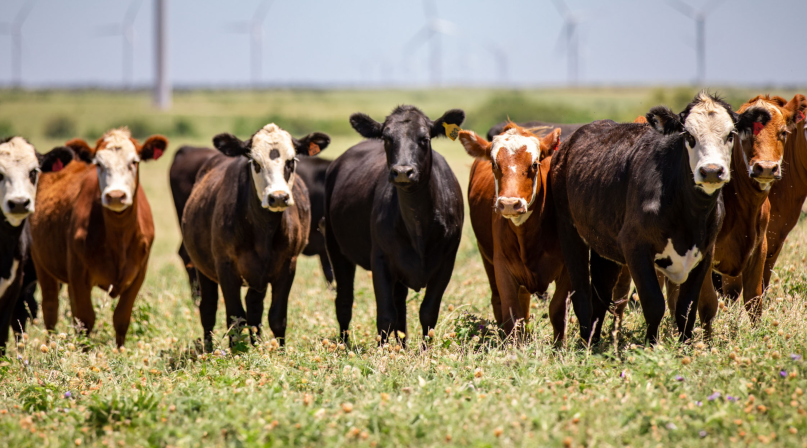U.S. Department of Agriculture releases plan to strengthen beef industry
Author

Owen Hart

Rachel Yeung
Upcoming Events
Related News

Key Takeaways
On October 22, the U.S. Department of Agriculture (USDA) announced its plan in a white paper to stabilize and strengthen the nation’s beef industry. Since 2017, the U.S. has lost over 17 percent of cattle ranches – more than 150,000 operations – while the national herd size has fallen to a 75-year low. USDA’s white paper lays out a long-term strategy that aims to reverse these trends by improving the resilience of the domestic beef industry, increasing consumer access to American beef products and boosting demand.
What’s in the plan?
USDA’s new guidance outlines the rollout of existing and new initiatives over time that fall under three key priorities:
Protecting and improving the business of ranching
- Increase grazing access through the upcoming USDA–DOI Grazing Action Plan (expected November 2025) to streamline permits, reopen vacant allotments and improve coordination between the U.S. Forest Service and Bureau of Land Management.
- Provide predator management updates by developing new evidence standards for compensating ranchers for livestock losses caused by wolves, bears, coyotes and other predator species.
- Expand disaster relief by improving the Livestock Indemnity Program (LIP) and Livestock Forage Program (LFP) to provide higher and earlier payments, cover unborn livestock and cover the cost of predator losses up to 100 percent of market value.
- Improve risk management tool affordability by expanding the “beginning farmer” definition from five to ten years and enhancing premium subsidies over a ten-year period through USDA’s Risk Management Agency.
- Increase the number of veteran-owned and operated ranches by prioritizing grant applications in the Enhancing Agricultural Opportunities for Military Veterans (AgVets) program.
Expanding processing, consumer transparency and market access
- Strengthen labeling transparency by enforcing Food Safety and Inspection Service (FSIS) compliance for “Product of USA” and “Made in the USA” claims starting January 1, 2026.
- Promote market fairness through USDA’s Agricultural Marketing Service (AMS) by maintaining public beef market data, expanding the Livestock Mandatory Reporting program and supporting the Cattle Contract Library.
- Support small processors by expanding AMS remote and technology-assisted grading programs and reducing FSIS overtime and holiday inspection fees.
- Boost local processing capacity with a fourth round of Meat and Poultry Processing Expansion Program (MPPEP) grants.
- Improve data accessibility through an AMS pilot using AI and vision technologies to assess feeder cattle and expand market transparency.
- Advance regulatory certainty under the Clean Water Act by providing clear and consistent definitions of “Waters of the United States (WOTUS)” to reduce compliance costs.
Building demand alongside domestic supply
- Expand Student Access to Locally Raised Beef by encouraging schools and institutions in USDA Child Nutrition Programs to serve locally raised foods, including American beef.
- Ensure Science-Based Dietary Guidelines for Americans by working with HHS to ensure the 2025–2030 Dietary Guidelines for Americans recognize protein as a dietary foundation.
What’s next?
Some actions outlines in the white paper are already in effect or may be implemented immediately under existing authorities, such as EPA’s withdrawal of Effluent Limitations Guidelines and Standards (ELG) rule in September 2025.
USDA will begin implementing new elements of its strategy in November 2025 with the release of its Grazing Action Plan. Additional components are expected to begin in early 2026 with the release of new grants through the Meat and Poultry Processing Expansion Program and the enforcement of the beef labeling rule. Other initiatives could require further rulemaking or congressional action before becoming effective.
County implications
Counties are critical partners in supporting rural America, from managing grazing lands and advancing local conservation efforts to assist small processors and producers that anchor rural economies. More than 70 percent of the nation’s 3,069 counties are rural, home to 38.5 million residents and spanning over two-thirds of the nation’s land area.
NACo will continue to monitor USDA initiatives to support rural economies and work with federal partners to protect the health and welfare of American producers and consumers.
Related News
Rural leaders pitch county capacity building
Counties are making the best of another year without a farm bill, using that time to articulate how Congress can better equip them for success. Their message is already coalescing around ways government policy can simplify federal-local cooperation and address capacity limitations.
Nebraska counties add new office, new NACo members
The Nebraska Association of County Officials reached out to its more remote members by opening an office in the western part of the state.

States submit Rural Health Transformation Program funding applications
On November 5, the Centers for Medicare & Medicaid Services (CMS) announced that all 50 states submitted applications for the Rural Health Transformation (RHT) Program.
Resource
Primer for Counties: 2025 Farm Bill Reauthorization
